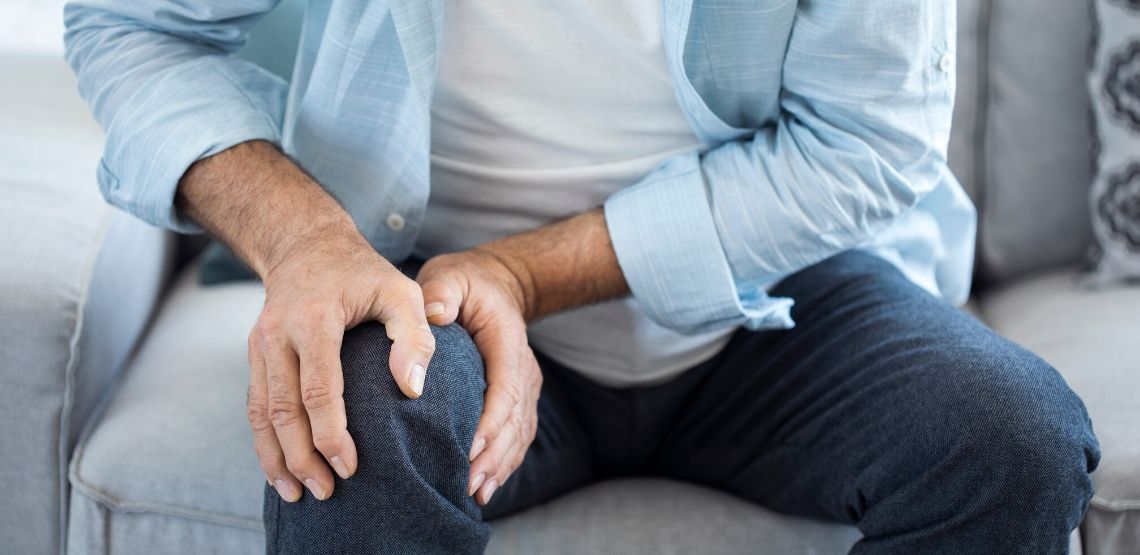Osteoarthritis of the Knee
Osteoarthritis of the knee is a common condition that impacts many individuals as they age. Thankfully, there are different ways to treat and manage pain.
What Is Knee Osteoarthritis?
Osteoarthritis is frequently referred to as the “wear-and-tear” arthritis. It happens when the protective cartilage in a joint deteriorates over time. This creates painful bone-on-bone rubbing, stiffness and swelling. In turn, it causes a wide range of discomfort and in some cases, bone spurs.
The hips and knees are common spots that are affected by osteoarthritis. This is due to their shock impact and their weight-bearing purpose. The knee absorbs a ton of impact over your life. If you are very active, your knees take on even more impact. It’s also found more in individuals who are overweight or obese, as the extra weight wears down the cartilage of the knee faster.
Causes of Knee Osteoarthritis
The most common cause of knee osteoarthritis is time. As you age, the joints naturally degenerate. Cartilage is unable to heal as quickly or as effectively. In fact, most individuals will develop some type of osteoarthritis during their life, whether they are aware of it or not.
Other causes of knee osteoarthritis include:
- Genetics. Interestingly, if someone in your family has osteoarthritis, you are more likely to develop it as well. This is due to possible gene mutations or genetic abnormalities in the bone.
- Repeated injury. Individuals who are involved in occupations or sports where a high degree of impact is placed on the knee are more susceptible to knee osteoarthritis. In particular, activities that involve squatting, kneeling, or heavy lifting, knee osteoarthritis may develop.
- Activity. Long-distance runners and other athletes may also develop osteoarthritis in the knee. This may happen from gradual wear and tear over time or from repeated injuries from an athlete’s chosen sport.
- Certain medical conditions. Surprisingly, individuals with rheumatoid arthritis have a higher chance of developing osteoarthritis, including in the knee. Further, individuals with metabolic disorders can develop knee osteoarthritis.
- Excess weight. Weight places stress on the joints, especially on the knees and hips. This leads to more degeneration over time. A simple way to avoid this is to maintain a healthy weight and lifestyle.
Related Search Topics (Ads)
The Signs and Symptoms of Osteoarthritis
If you have any of the above risk factors, it is good to know the warning signs. The earlier your find treatment, the easier it will be to cope with symptoms.
The signs and symptoms of knee osteoarthritis include:
- Pain that occurs during or after movement but may improve with rest
- Swelling or warmth at the joint
- Stiffness, especially after waking up or after sitting
- Decreased flexibility or mobility, which may make standing up or getting out of the car difficult
- Grating, popping, or cracking sensations and sounds when you move the knee
- Bone spurs
Treating Your Knee Pain
Knee osteoarthritis is diagnosed via an x-ray or MRI. An MRI is often done when an x-ray does not detect the cause of your pain. Blood tests may also be performed to ensure that it is knee osteoarthritis causing your pain and discomfort.
Once diagnosed, your treatment is aimed at relieving pain and improving function. This frequently involves physical therapy, which strives to reduce your pain and increases your function through movement and manual therapy.
Initially, your doctor may prescribe or recommend medication to help decrease your pain, especially in cases where it is severe. Medications may include acetaminophen, ibuprofen, naproxen, cortisol injections, NSAIDs, or in rare cases, antidepressants.
If weight has contributed to your condition, your doctor will further advise lifestyle changes with the goal to bring your weight to a healthy level. This will help take pressure off the knee and slow down further degeneration, as well as reduce your pain.
A brace may also b e used, depending on your unique situation. In more serious cases, a knee replacement is recommended. This involves taking out the damaged part of the knee joint and resurfaced with metal or plastic parts. This improves function and reduces pain. With knee surgery, physical therapy is advised before and after.
How Improving Your Health Can Help Symptoms
Ultimately, pain and discomfort associated with knee osteoarthritis can frequently be managed through lifestyle changes and adjustments. This involves healthy weight maintenance and exercise. Exercise releases endorphins (which are natural pain relievers) and also improves strength, providing stability and support to your joints.
Also, consider participating in a healthy lifestyle. Many individuals with knee osteoarthritis are able to live pain-free lives through healthy living habits. Improve your health to improve your life and eliminate pain. This condition does not have to hold you back.

